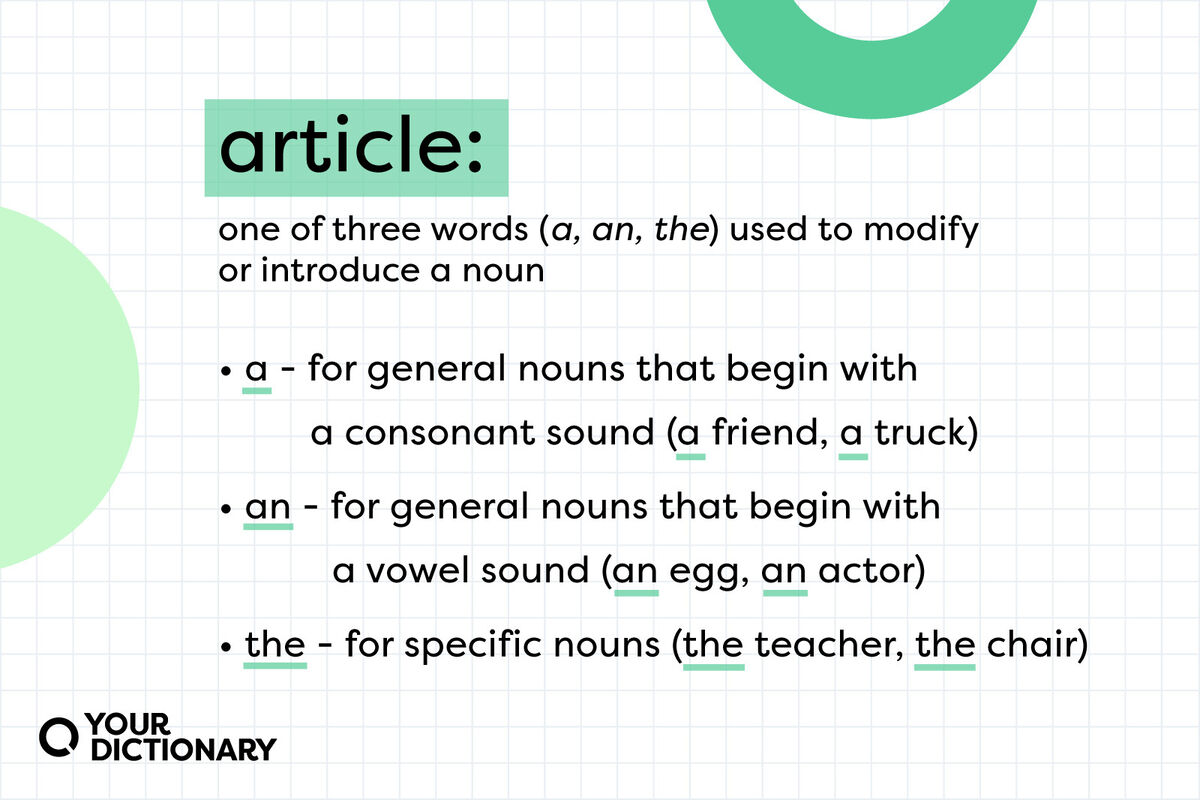
A, an, and the are three of the smallest words in the English language — but that doesn’t mean they’re the least important. Using these three articles correctly might feel like second nature, but there are specific rules for using indefinite and definite articles — and it all depends on the noun they accompany.
What Is an Article?
An article is one of three small words that comes before a noun: a, an, and the. You’ll find one (or more) in nearly every sentence.
- I found a dollar.
- Let’s buy an iguana.
- Millie knows the answer.
Are Articles Adjectives?
Most people believe that there are eight main parts of speech: nouns, pronouns, verbs, adjectives, adverbs, conjunctions, prepositions, and interjections. Because articles modify nouns, we often group them as a type of adjective.
Articles also fall into the category of determiners, like this or several, which introduce nouns.
What Do Articles Do?
Articles aren’t just sidekicks to the nouns in a sentence. There are two types of articles in English — indefinite articles (a and an) and definite articles (the) — and they each have important functions.
Indefinite Articles Introduce General Nouns
The indefinite articles a and an introduce general singular nouns, typically when the speaker doesn’t know or care which noun they’re talking about.
Use a when the next word begins with a consonant sound, and use an when the next word begins with a vowel sound.
- A man bought an apple. (Not a specific man or a specific apple)
- An angry lion growled at a surprised zoo visitor. (Not a specific lion or a specific visitor)
- A student visited a university. (Not a specific student or university — which begins with a “y” consonant sound)
When using plural or uncountable nouns (such as dogs or water), use plural determiners (many dogs, some water).
Definite Articles Introduce Specific Nouns
We use the for specific singular, plural, and uncountable nouns.
- The man bought the apple. (A specific man is buying a specific apple.)
- The angry lion growled at the surprised zoo visitor. (A specific lion is growling at a specific person.)
- The student visited the university. (A specific student is visiting a specific university)
You should also use the before:
- ordinal numbers, such as first or tenth (the first grandchild, the last table)
- unique nouns where there is only one in existence (the Sistine Chapel, the sun)
- the adjective only (the only sister, the only student)